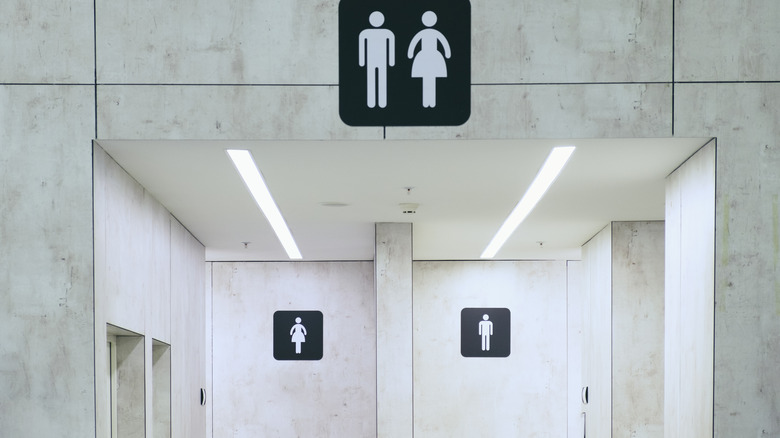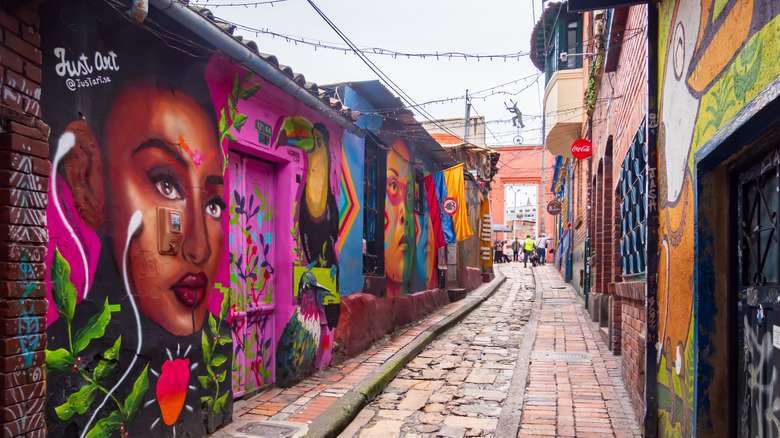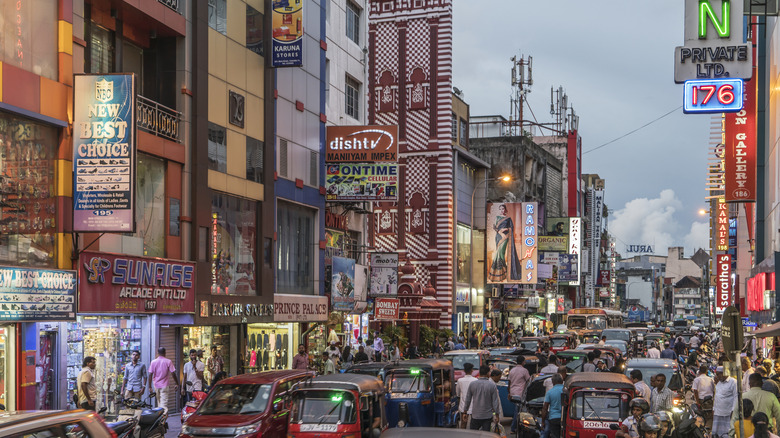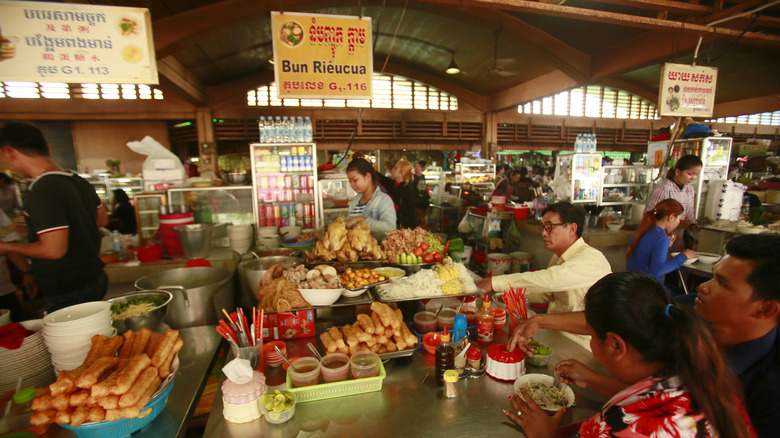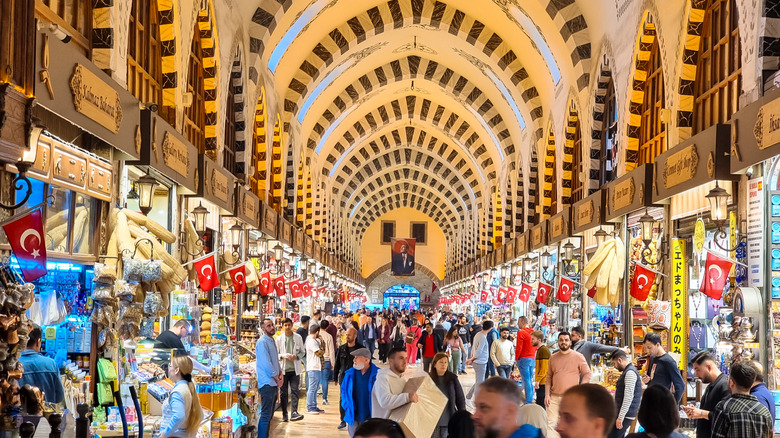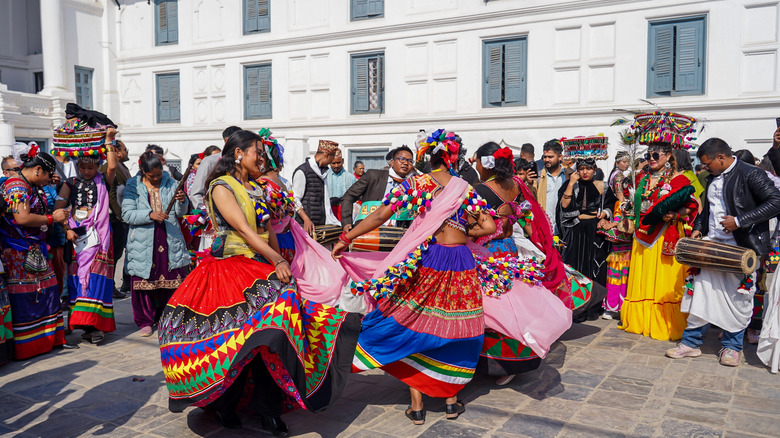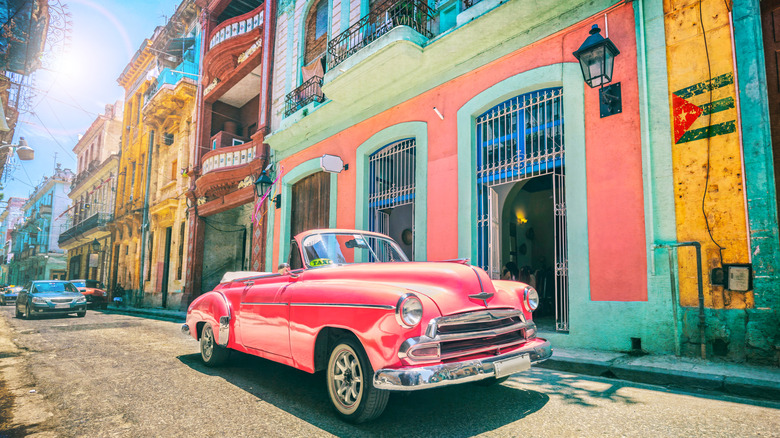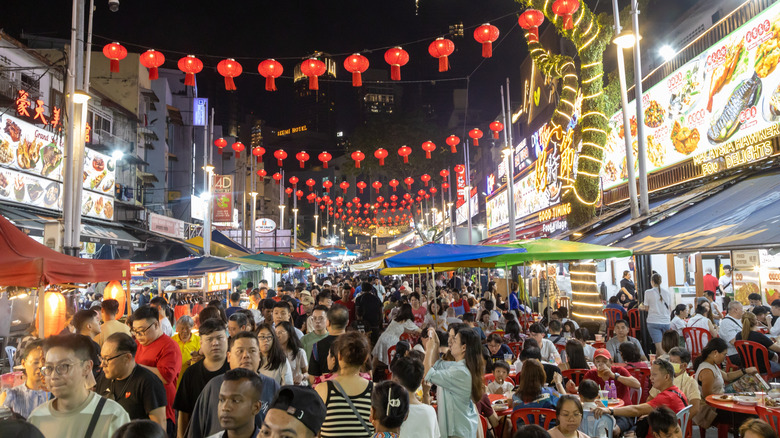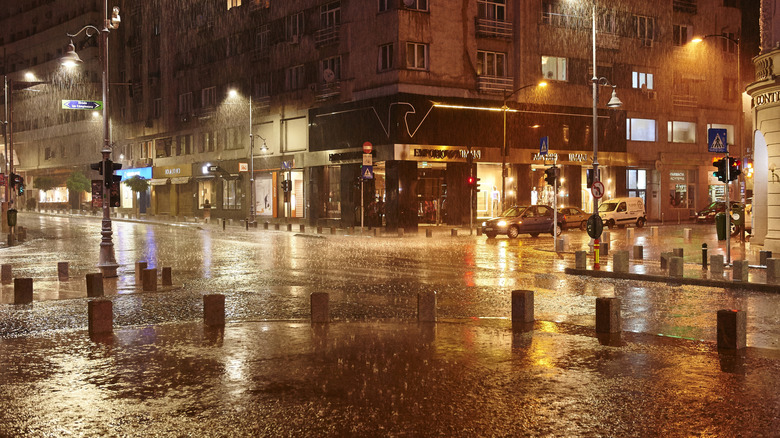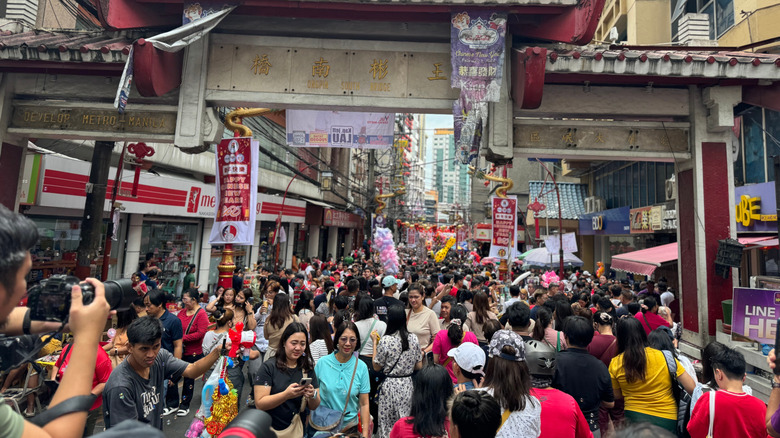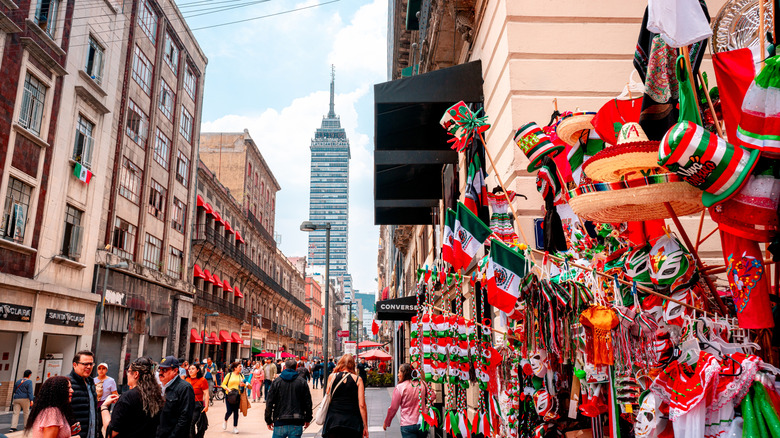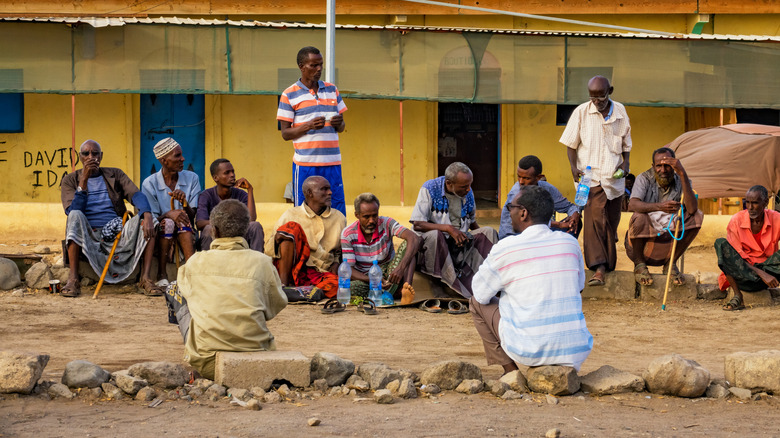Tourist Cities Across The Globe With The Worst Public Toilet Access
The reality of traveling is that not all toilet facilities are constructed equal. Bathrooms in our homes are, of course, the gold standard. They offer the advantage of providing everything we need at our required level of hygiene and with minimal or non-existent waiting times thrown in for good measure.
Hotels tend to rank second, restaurant facilities third, and trailing somewhere behind, you'll find the public access versions of restrooms. Such places lurk in the corners of bus stations and advertise their presence on busy intersections, or else are hidden within the labyrinthine halls of local malls. They are places of turnstiles, of varying degrees of hygiene, and are often paywalled. Fringed by gently shifting patrons lining up in silence, trying to shoo from their minds the pressing need that brought them there in the first place, they are bastions of last resort energy.
Still, in many countries, access to public facilities is just something we take for granted. Iceland, for example — a land filled with amazing budget-friendly things to do — is also blessed when it comes to toilet facilities. There are no fewer than 56 public bathrooms per 100,000 residents, according to QS Supplies. And if that still feels like a low number, then you may need to prepare yourself for some of the other places on this list.
Bogotá, Colombia
Bogotá is the capital city of Colombia. A sprawling metropolis of some 11.8 million people, lying 185 miles northeast of Salento, it is a destination that all coffee lovers should visit in their lifetime, travel advisory warnings notwithstanding. The city rests at an elevation of 8,660 feet above sea level, making it one of the high-elevation cities in the world. Indeed, while Bogota residents are well used to the thinner atmosphere, travelers should take their time getting acclimatized and keep an eye out for the tell-tell signs of altitude sickness, which can include headaches, nausea, dizziness, and fatigue.
Once you have adapted to the rare atmosphere, however, Bogotá can be an absolute delight. It offers a mixture of fine colonial architecture and cultural touchstones such as the dazzling Gold Museum or the divine Santuario de Monserrate. The latter is a 17th-century sanctuary that offers incredible views of the city. Meanwhile, the ever-popular Bolívar Square serves as the heart of a vibrant city filled with life, music, and laughter. Alas, a less joyful experience is to be found in the bathroom facilities.
With fewer than 1 public restroom per 100,000 people, Colombia, in general, has poor public sanitation, via QS Supplies. Within the creaking infrastructure of Bogotá, however, things are even worse. Finding a public restroom is nearly impossible. Even when a convenience is found, they are often too filthy to use. Men frequently resort to peeing behind bushes and trees. Meanwhile, women find themselves glued to hotels or else avail themselves of any number of the fancy shopping centers that you'll find dotted around the city.
Colombo, Sri Lanka
Approximately 2 million international travelers visit Sri Lanka each year. There are many reasons to do so. The island, known to some as the Pearl of the Indian Ocean, is littered with fine beaches, enjoys a warm, tropical climate year-round, and is a genuine bastion of wildlife conservation. There are 28 national parks in total, including Yala, which features the highest concentration of leopards on the entire island. UNESCO heritage sites abound, and visitors often make the trek to Sigiriya — also known as Lion's Rock — an incredible hike that offers stunning views of the Sri Lankan jungle.
Its capital city, Colombo, sits on the island's West Coast, some 252 miles south of Jaffna. It is a city of temples, fringed by rural villages and varied accommodation. It also offers visitors everything they would expect from a major city, including a zoo, museums, and incredible dining opportunities. Everything you would expect, that is, aside from access to serviceable public restrooms.
Sri Lanka has a serious sanitation problem. There is 1 public toilet for every 20 homes, according to Daily Express, and this paucity of facilities extends well into the public realm. The usual caveats do not always apply. While most hotels, higher-end restaurants, and upmarket shopping centers make efforts to take care of their patrons, others do not. If they do, the facilities might be unsatisfactory. Indeed, straying too far from tourist locations often leads to some hair-raising encounters. A stroll down the city's most famous landmark, Independence Arcade, for example, reveals a world of culinary marvels, but few of the restaurants have bathrooms of their own. Instead, you are expected to use the subterranean facilities nearby, which might be broken down, wet, and, frankly, more than a little smelly.
Phnom Penh, Cambodia
Cambodia is a nation renowned for its outstanding natural beauty. Every year, people flock in their millions to experience all that the nation has to offer. These include stunning coastlines across the Gulf of Thailand, the lush jungles of its interior, and picturesque meanderings of the mighty Mekong River. Founded during the 12th century, when the world-famous Angkor Wat was constructed, the nation's convoluted history includes a period of French colonial rule that lasted exactly 90 years, leaving a lasting mark on its cultural heritage, architecture, and cuisine.
Meanwhile, the capital city of Phnom Penh is often thought of as a gateway into the rest of Southeast Asia, with the Missouri-sized nation bordered by Vietnam, Laos, and Thailand. With a population of just under 2.4 million, the city is also known for its low cost of living, making it easy for solo travelers to splurge on an amazing getaway. A drivable 141 miles from Ho Chi Minh City, visitors are treated to journeys through bustling markets, spectacular views from the nearby Wat Phnom, tours of the terracotta-clad National Museum, and so much more.
What they are not granted is access to sanitary toilet facilities. Less than proud members of the 1 public toilet per 100,000 people club (via QS Supplies), the situation in the nation's capital when it comes to WCs is about as dire as it could be. A recent push to build 37 new public conveniences along popular nightlife hot spots, such as Walk Street, promises to improve the situation somewhat. However, at the time of writing, at least, such plans have yet to be implemented.
Istanbul, Turkey
There is perhaps a conceit that the Western style of toilet is a ubiquitous monument to the finer art of biological necessities. The setup is, of course, familiar. A seat of some sort, a bowl, generally, although not always, made of porcelain, a tank of water, and a flushing mechanism. More exotic devices have appeared on the market in recent years, ranging from technology-infused smart toilet and bidet combos to environmentally conscious self-composting delights.
Still, there is one type of toilet that is often overlooked by Western eyes. The much dreaded, and, for many, challenging to master, squat toilet. Some 4 billion people worldwide make use of squat toilets every day. For many, the idea of sharing a seat with someone else's recently departed butt mirrors the squeamishness Westerners sometimes feel about the squat method. Such toilets are considered more hygienic and better for one's posture. There are bodies of scientific work that agree with such an analysis.
Of course, there are times, however, when pressing needs take precedence over personal preference, and in Istanbul, such events occur more often than you'd like. While both varieties of toilets can be found within Turkey's famous city, the Alaturka or elephant's foot squat toilet is far more common outside of hotels and some of the more upmarket restaurants. Gas stations, malls, and public conveniences near well-traveled routes act as somewhat reliable backups, but whether they have Alaturka or their Western equivalent — known as Alafranga — is a potluck event.
Kathmandu, Nepal
Kathmandu, the capital of Nepal, is often referred to as the City of Temples due to the vast array of shrines of Hindu and Buddhist varieties sprinkled across the city's vast urban sprawl. With a plethora of architectural marvels, parks, and eateries to delight the senses, visitors are spoiled for choice when it comes to exploring the city's 1,300-year-old history. It is a shame, then, that the same cannot be said for access to the simple luxury of a working lavatory. There are only 35 public conveniences in Kathmandu (according to The Kathmandu Post), a city of 1.4 million people.
To make things worse, on the rare occasion where you manage to locate a working public restroom, most of them only have urinals, making them useless for roughly half of the human population. Still, toilets in hotels are, of course, in good shape, and any half-decent restaurant will let you use their facilities. That is to say that although they will most assuredly welcome your patronage, asking them to use their bathroom for free isn't likely to pay the kind of dividends you hope for.
Havana, Cuba
To be clear, Cuba has much to offer the itinerant explorer. It is a place well-suited for a sun and beach experience, an island of fine weather, rich history, and unique fauna. Indeed, Cuba attracts close to 3 million annual visitors eager to immerse themselves in the music, food, and rich history that stretches back to the earliest days of European exploration. Yes, it is a nation beset by problems, and such difficulties often find themselves magnified tenfold in the capital city, Havana. And yes, there are certain things you need to be aware of as a tourist visiting Cuba. Finding a decent restroom is one of them.
Although you are unlikely to encounter any sirens, ravenous cyclops, or goddesses able to turn men into beasts, a search for a restroom in Havana often feels like the kind of journey that would have had Odysseus quaking in his sandals. Indeed, the situation is so dire that an industry has emerged to address these physiological needs. In Havana, you should expect to pay a nominal fee to use public restrooms, even those located in cafés, bars, and restaurants. At the very least, you might find yourself charged for a square of toilet paper.
Those who balk at such entrepreneurial excesses have few options available. In stations and close to stadiums, the occasional lavatory can be found. The state of such places varies only insofar as some are more dilapidated than others. Few meet even the most basic standards of hygiene; there are often long lines to get in, and yes, you generally need to pay to use them.
Kuala Lumpur, Malaysia
When one's mind turns to the glittering Malaysian capital, thoughts of dazzling landmarks, scintillating cuisine, and tropical climates tend to dominate. Such notions are very much grounded in the reality of the place. The Petronas Twin Towers rule the skyline, eclipsed only by the newly constructed Merdeka 118 building, which towers 2,227 feet above the city. Visitors can explore the technicolor wonder of the nearby Batu caves, wander around the shops, restaurants, and museums of Merdeka Square, or simply relax in one of the city's world-class parks. Relax, that is, if you can find a restroom when the need arises.
Kuala Lumpur is situated just over a one-hour flight from Langkawi Island, one of Southeast Asia's premier destinations for a breathtaking beach vacation. It has a total population of 9 million people and, unlike many other cities on this list, actually manages to offer 2 public conveniences per 100,000 citizens (via QS Supplies). Of course, Kuala Lumpur is one of the most-visited cities in all of Asia. Malaysia itself receives over 13 million annual visitors, and such traffic adds to the genuine dismay of finding a working restroom.
In recent years, tourists have cited a lack of toilet paper as a principal issue, compounded by a prevalence of wet and slippery floors and a general inconsistency when it comes to hygiene and cleaning. Thrown in for good measure is the added anxiety of non-Western amenities in the form of the squat toilet. To be fair, they just take a little getting used to, yet remain problematic for those too infirm to hold the position and those used to the convenience of disabled toilet access.
Bucharest, Romania
It's tempting to think that Europe is so ancient and civilized that matters relating to the use of public restrooms can be safely ignored when planning a visit. The reality, however, is that Europe is a continent mired by vastly different standards of living. With many ways of tracking a nation's wealth available to social scientists, a definitive list is hard to get hold of. Still, needless to say, Romania is not hovering near the top of one.
This is not to say that the capital city isn't a delight. Once, and still, by some, known as Little Paris, thanks to its architectural diversity, the city's vibrant old town is alive with tea houses, coffee shops, restaurants, and hidden gems such as the Palace of Antiquities, The House of Mița the Cyclist, and its famous flea market. Restroom-wise, however, things are a little grim. You'll find plenty of options around some of the larger metro stations, but barring those, the best you will find are portaloos dotted around the cityscape. Such facilities are best left for the truly desperate. Cafés and fast-food joints are a better option. However, in Romania, they tend to be keypad-protected, ensuring that only genuine customers have access to the facilities.
Manila, Philippines
Delicate sensibilities often drive people to euphemisms when it comes to biological necessities. In the West, we often mask true intentions via words such as "bathroom," "gents," "ladies," or "facilities." In the Philippines, they use the term "comfort room." Such knowledge may seem trivial, but it can make all the difference when searching for a place of relief in a city of 15 million with 1 public toilet per 100,000 people (via QS Supplies).
To be fair, there is much to recommend about the capital and the country in general when it comes to vacationing. The tropical climate lends itself well to the holiday atmosphere, accommodation is plentiful and cheap, and all the usual city-break options are on full display: museum shopping, retail therapy, street food, fine dining, and strolling through one of the city's many parks that helped gain it the title as the Pearl of the Orient. Getting around, however, remains something of a problem.
Within the capital, the metro is the way to go; traffic is universally horrendous, although skipping the unique, quirky form of public transport known as tricycles is not recommended. Outside the city, the nation has less than 100 miles of operational railway, making a rental car the default option. Toilet access during these stressful sojourns is spotty at best. Few Western-style conveniences exist, and many of the squat toilets found even at Metro stations have no partitioning screen. Manila is also very much a place where carrying your own toilet paper is something of a must.
Mexico City, Mexico
Tourists visiting the Mexican capital should know that public bathrooms often lack one common feature. Most of them seem to be missing their seats. That might not be too much of an issue for those savvy enough to bring their own seat covers with them, but the city's struggles with hygienic places of refuge don't stop there. You'll find restrooms dotted about the city behind paywalled turnstiles, and, not for the first time on this list, bringing your own toilet paper is a must. A secondary item to add to your checklist, however, is hand sanitizer. The need to keep your hands clean is of paramount importance, especially in Mexico City.
In part, this is due to the colorfully titled Montezuma's Revenge, a gastrointestinal bug that unwary visitors to Mexico and Central America often fall victim to at the expense of what might otherwise be a wonderful vacation. In the capital, however, things take a much darker turn thanks to the collapse of its antiquated sewage system. Leaking pipes allow human waste to pool underground, only to reemerge later as black, contaminated water known to the locals as Aguas Negras. Such pooling events are common, and public restrooms are one of the best places to experience them. Sticking to hotels or higher-end restaurants is most advised.
Djibouti City, Republic of Djibouti
It could perhaps be argued that Djibouti City is not quite of the same caliber as some of the tourist cities on this list. In 2021, the nation only welcomed slightly more than 110,000 tourists to its shores, a figure the government aims to increase fourfold by 2035. Still, the capital city, located on the coast just 555 miles from Addis Ababa, has one singular distinction. It might just have the worst public restroom access in the whole world.
The situation is so dire that it goes well beyond the simple need for public conveniences. A full quarter of all residents in the city have no access to toilet facilities whatsoever. Needless to say, in a situation where residential households lack sanitation, the trials of finding one yourself are multiplied tenfold. Staying close to military bases – of which there are many — is one way of shoring up access, as these areas often cater to local personnel. Other than that, it often comes down to hand sanitizer and a quick prayer on the rare occasion in which you do find a place to go.
